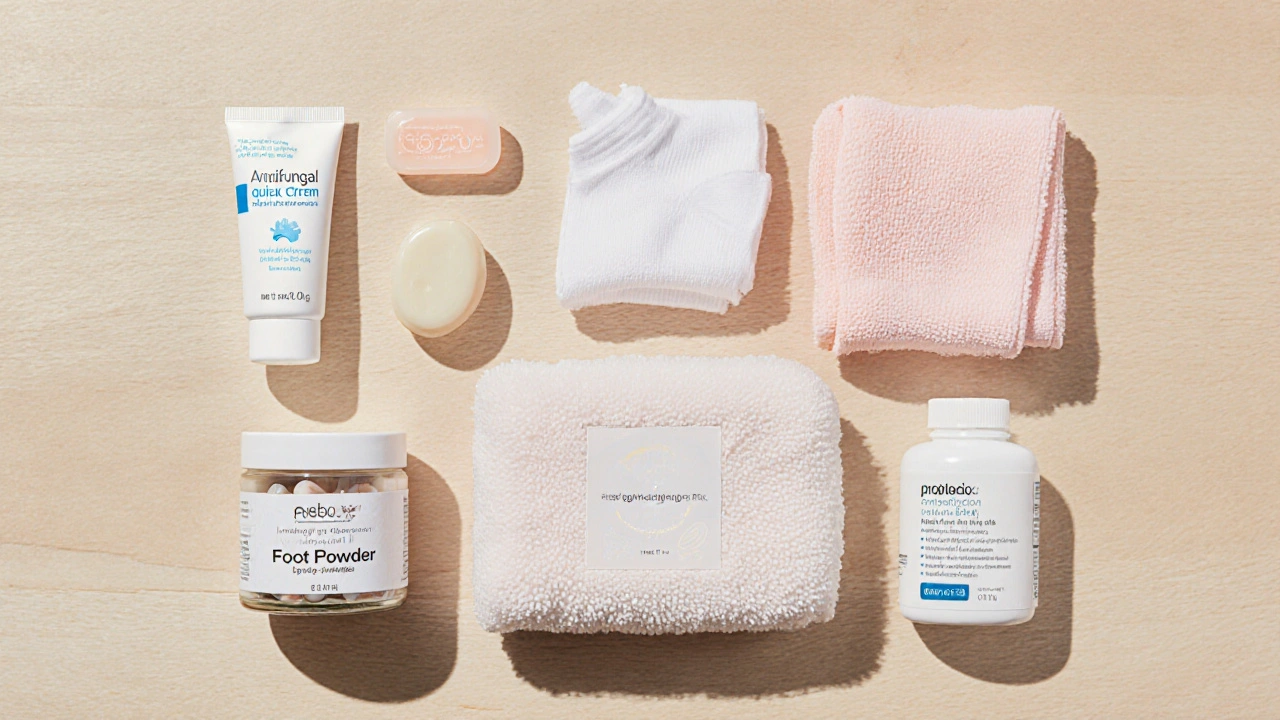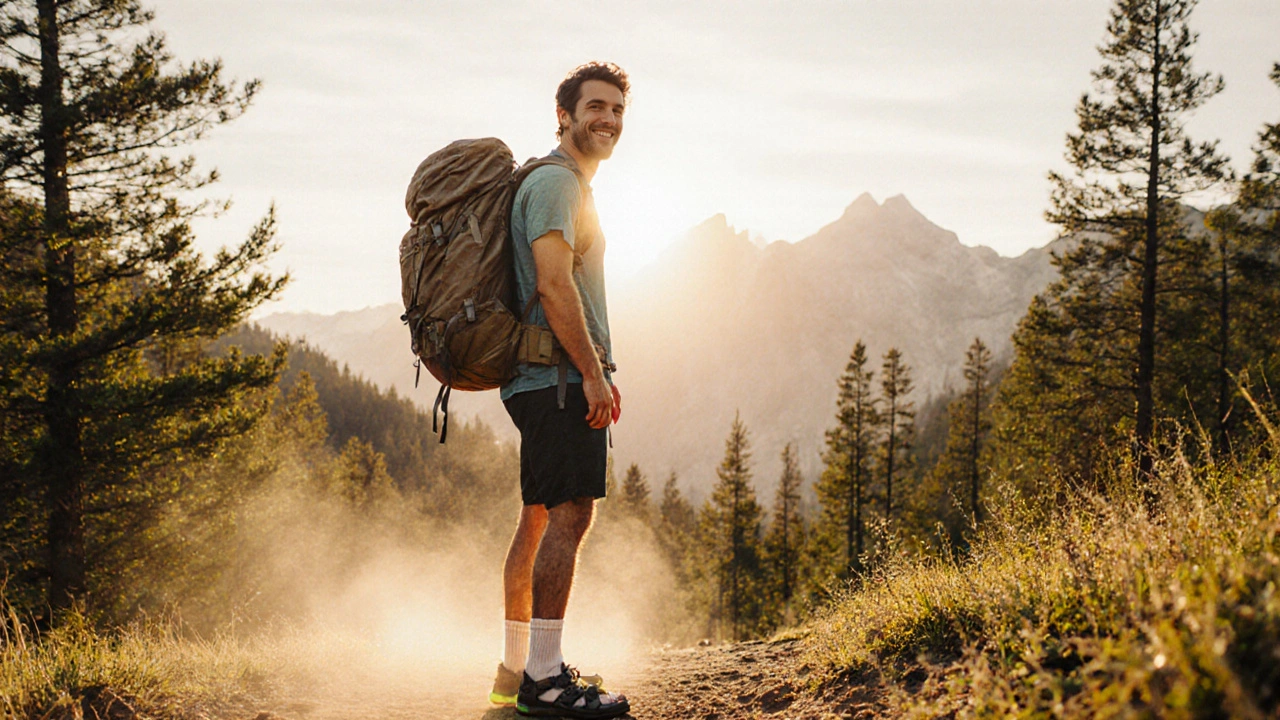
Travel Yeast Infection Prevention Checklist
Your Personalized Travel Prevention Checklist
When you’re hopping between airports, hostels, and hiking trails, the last thing you want is an itchy rash that ruins the vibe. Yeast infection of the skin is a fungal irritation caused primarily by overgrowth of a yeast called Candida albicans. It thrives in warm, moist spots - think inside shoes, under a strap, or in a sweaty backpack pocket. Knowing why it pops up on the road and how to keep it at bay can save you days of discomfort.
Why Travelers Are Prone to Cutaneous Candida
Three factors line up when you’re on the move:
- Moisture: Long flights, humid climates, and sweat‑soaked clothing create the perfect breeding ground for yeast.
- Disrupted Skin Microbiome: A healthy skin microbiome (the community of bacteria and fungi that live on your skin) can be knocked out by frequent washing with harsh soaps or exposure to chlorine pools.
- Immune Stress: Jet lag, lack of sleep, and the physical strain of travel weaken the immune system, making it harder to keep Candida in check.
Combine any of those with tight shoes or synthetic fabrics, and you’ve got a recipe for a red, itchy patch that can spread if untreated.
Spotting the Signs Early
Catch it before it spreads. Typical symptoms include:
- Redness that may turn into a slightly raised, scaly rash.
- Itching or a burning sensation, especially after you’ve been active.
- Small pustules or white‑like patches that can ooze under pressure.
If you notice any of these in folds (under the bra, between toes, or around a backpack strap), act fast - early treatment is simpler and less likely to interfere with your itinerary.

Everyday Prevention While You Travel
Think of prevention as a checklist you keep in your carry‑on:
- Choose breathable fabrics. Moisture‑wicking shirts, cotton socks, and sandals let sweat evaporate rather than sit.
- Keep feet dry. Pack a small, quick‑dry towel. After a hike, pat your feet and the inside of shoes dry before slipping them back on.
- Rotate shoes. Give each pair a chance to air out for at least 12 hours.
- Limit antibiotic use. Antibiotics can wipe out good bacteria that keep Candida in balance. Only take them when a doctor prescribes them.
- Practice good personal hygiene. Use a gentle, pH‑balanced soap and avoid over‑scrubbing, which can irritate the skin barrier.
- Carry a spot‑treatment. A small tube of antifungal cream (e.g., clotrimazole 1%) can stop an outbreak in its tracks.
These habits fit into any travel style - backpacking, business trips, or family vacations.
Choosing the Right Over‑The‑Counter Antifungal
If a rash appears, an OTC cream is usually enough. Here’s a quick comparison of the three most common options you’ll find in pharmacies worldwide:
| Active Ingredient | Typical Use Duration | Price Range (USD) | Notes |
|---|---|---|---|
| Clotrimazole 1% | 2-4 weeks | $5‑$10 | Broad‑spectrum, works well for most skin Candida. |
| Miconazole 2% | 2-3 weeks | $6‑$12 | Effective for athlete’s foot and groin infections. |
| Terbinafine 1% | 1-2 weeks | $8‑$15 | Fast‑acting; may cause mild irritation on very sensitive skin. |
Apply a thin layer twice daily to clean, dry skin. If no improvement after 7 days, see a local clinician - especially if the rash spreads or you develop fever.
What to Pack: The Travel‑Ready Skin Kit
Space is premium, so keep the kit lean but effective:
- Travel‑size antifungal cream (choose one from the table).
- Pack of moisture‑wicking socks (at least two pairs).
- Small quick‑dry towel or microfiber cloth.
- Silicone‑based foot powder (helps keep shoes dry).
- Gentle, fragrance‑free soap bar.
- Optional: probiotic supplement to support the gut‑skin axis.
All these items fit into a standard toiletry bag and cost under $30 total.

When to Seek Professional Help
Most skin yeast infections resolve with OTC cream, but watch for red‑flag symptoms:
- Rapid spreading beyond the original site.
- Severe pain, swelling, or pus.
- Fever or chills (possible secondary infection).
- Recurring outbreaks despite proper hygiene.
In those cases, a doctor may prescribe oral antifungals like fluconazole. Bring a copy of any prescription and a short note describing the situation - many clinics in Europe and North America understand short‑term travel needs.
Quick Recap: Your Travel‑Proof Plan
- Keep skin dry and breathable.
- Limit antibiotics and harsh soaps.
- Carry a spot‑treatment antifungal cream.
- Know the signs - act within 48hours.
- Seek medical help if the rash worsens.
With these habits, you can focus on the sights rather than scratching.
Frequently Asked Questions
Can I get a yeast infection from swimming pools?
Yes, especially if the water is warm and chlorinated poorly. The moisture on your skin combined with the yeast that can live in pool water may trigger an outbreak. Rinse off and dry thoroughly after swimming.
Is it safe to use antifungal cream on broken skin?
Apply only to intact skin. If you have cuts or abrasions, clean them first and consider a prescription oral antifungal - the cream may not penetrate well.
Do probiotics really help prevent skin yeast infections?
There’s growing evidence that a healthy gut supports the skin microbiome, reducing Candida overgrowth. A daily probiotic containing Lactobacillus strains can be a useful preventive measure, especially after antibiotics.
How long should I continue using antifungal cream after the rash disappears?
Continue for at least 5‑7 days after symptoms vanish to ensure the fungus is fully cleared. Stopping early often leads to recurrence.
Can tight shoes really cause a yeast infection?
Absolutely. Tight footwear traps heat and sweat, creating an ideal environment for Candida. Opt for breathable shoes and give your feet a break whenever possible.





